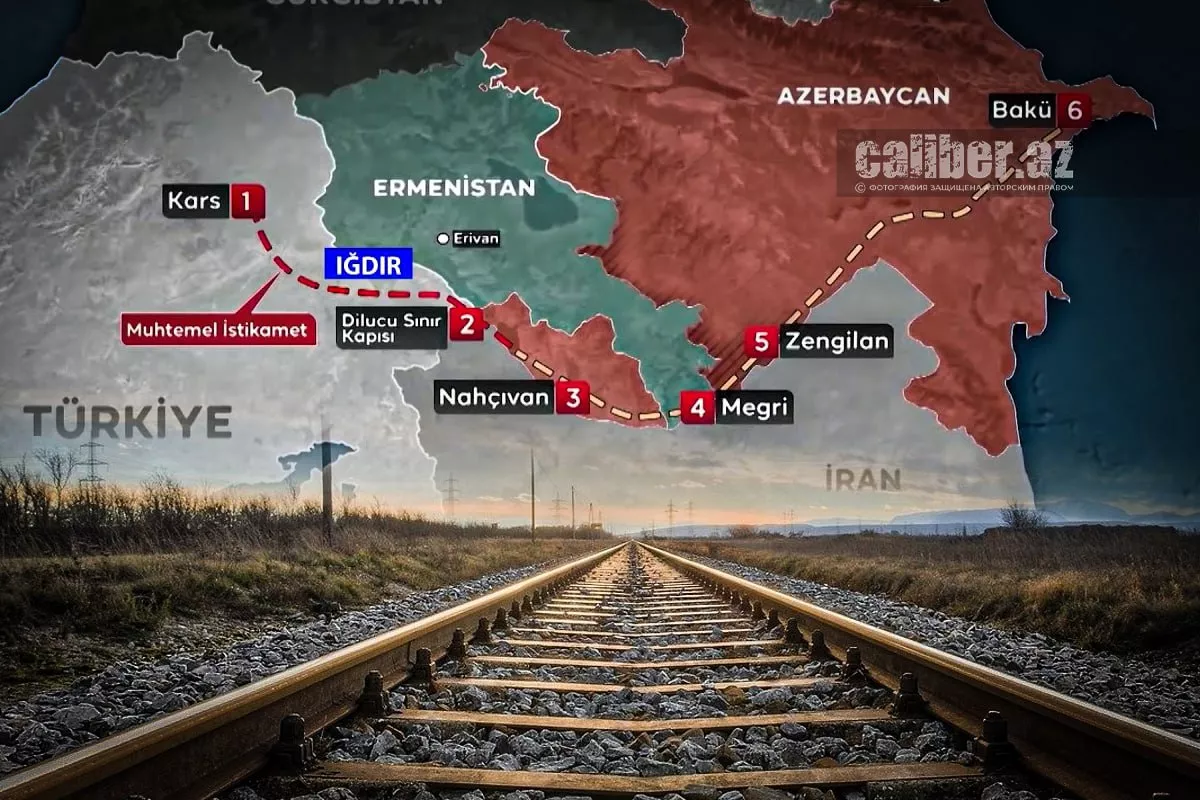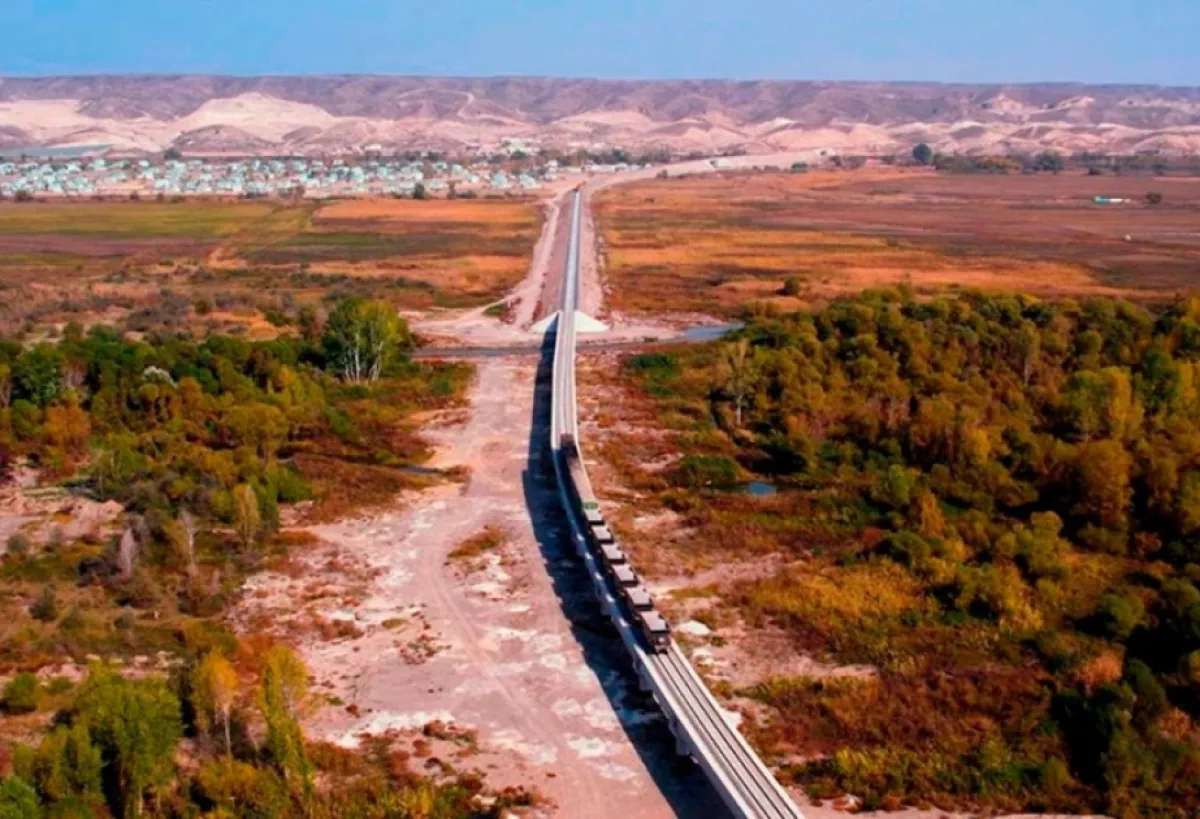Zangezur Corridor: catalyst for economic growth in South Caucasus Analysis by Caliber.Az
The prospect of the rapid restoration of transport communications in the South Caucasus within the framework of the Trump Route for International Peace and Prosperity (TRIPP) project opens fundamentally new opportunities for the economic development of the countries in the region. Alongside the transport unblocking of the Nakhchivan Autonomous Republic (NAR) and the strengthening of connectivity between “mainland” Azerbaijan and Türkiye, the Zangezur Corridor holds significant potential to expand the trade and economic opportunities of Armenia, Georgia, as well as the states of Central Asia, Russia, China, and the European Union.
By reinforcing regional interconnectedness, this corridor will reshape the transit map of the region and, together with transport infrastructure, can be complemented by power lines and fibre-optic networks.
Azerbaijan’s efforts to swiftly restore transport communications in the South Caucasus are gaining an increasing number of supporters both within the region and beyond.
“I am sure that TRIPP, to become the next crucial segment of the Middle Corridor, will serve as a key transport link connecting Asia and Europe, expanding the transit capacity for international cargo shipments, and contributing to the prosperity of regional countries as well as their integration into global supply chains. TRIPP also offers significant potential for the future transportation of energy resources, the export of electricity - particularly renewable energy - and the installation of fibre-optic lines, thereby helping transform the region into an international hub for trade and digital communications. Azerbaijan has mobilised all its efforts to ensure the prompt realisation of this route,” said President Ilham Aliyev in his address to participants of the recently held 6th Caspian Business Forum in New York.

A key component of this strategy is the development of the railway and road infrastructure of the Zangezur Corridor, and over the past five years, Azerbaijan has made significant progress in constructing the transport junctions along this route. The construction of the 123.8 km Horadiz–Jabrayil–Zangilan–Aghband highway is nearing completion, while the 110.4 km Horadiz–Aghband railway is expected to be finished by mid-2026.
Within the framework of the TRIPP project, American companies are expected to restore railway communications on the 42-km section of the corridor passing through Armenian territory by the end of 2028. This line will then be extended into the Nakhchivan Autonomous Republic (NAR). Following that, the plan is to connect the tracks from NAR to the under-construction 224 km Kars–Igdir–Aralik–Diluju line, providing convenient and rapid access to the Turkish, Middle Eastern, and European markets.
Thus, in approximately three years, the region is expected to gain a new, shorter, and more convenient route along the Middle Corridor. According to experts from the Center for Economic and Social Development (CESD), who prepared the Geostrategic Analysis of the Zangezur Corridor: Azerbaijan, Armenia and Georgia, the new corridor will not only promote the growth of transit trade but also strengthen regional interconnectedness in transport, energy, and communications. It will further support the development of a more diversified and resilient economy in the South Caucasus.

One of the primary beneficiaries of these initiatives will be Azerbaijan itself. In particular, reopening transport links to the NAR will end the economic isolation of the region, significantly lower transport costs, and expand the export potential of its enterprises. Until now, exports from NAR were primarily transported by TIR trucks through Sadarak to Türkiye, and via Julfa and several other border crossings to Iran—a process that made transit comparatively expensive.
Once the railway infrastructure of the Zangezur Corridor is operational, cargo can be moved in trains of 50–60 wagons or containers, with direct access to major Azerbaijani cities, Turkish transshipment hubs, and other international markets. This will be a decisive factor for the growth of Nakhchivan’s industrial cluster, which includes around 440 non-oil enterprises, 21 ore deposits—including gold and other precious metals—mineral water production, rock salt, construction materials, and a variety of agricultural and food products.
Specifically, the cost of transporting over one million tonnes of goods annually from other regions of Azerbaijan to NAR will decrease substantially. Improved land connectivity will also significantly reduce passenger transport costs, saving over $10 million each year that is currently spent subsidising Baku–Nakhchivan flights.
The commissioning of the Zangezur Corridor will reduce logistics costs between Azerbaijan and Türkiye and is expected to increase trade turnover to $15 billion or more in the coming years. In addition, the corridor’s development will grant NAR the status of a transport hub in Eurasia, attracting investment not only in logistics but also in industry and agricultural processing, with the subsequent export of finished products to Türkiye.
Freight carriers from China, the Central Asian states, and Russia—interested in the shortest routes toward Türkiye—are expected to connect to the Zangezur Corridor. Russian grain, lumber, metallurgical products, as well as goods from Central Asian countries—cotton and textiles, ore concentrates, fertilisers, chemical and food products—represent just a partial list of the cargo expected to transit through the new corridor.
The potential of this new regional logistics corridor is also highly valued in China (within the framework of the Belt and Road Initiative), in Middle Eastern countries, and in the EU. Preliminary estimates suggest that transporting railway containers via RO-RO ships and RO-Pax ferries across the Caspian to the Alat port, and then through the Zangezur Corridor to Türkiye’s Mediterranean ports, will take significantly less time—including border procedures—than other routes along the Middle Corridor.
The entire flow of this cargo will pass through Azerbaijan, and the high utilisation of railway transport will provide the country with substantial transit revenues and allow for a relatively quick return on the investments currently being made to develop the transport network in the Karabakh region.

Equally promising are Azerbaijan’s plans to establish the export of “green” electricity, including that generated in the Karabakh region, to Türkiye and further to EU countries through the Zangezur Corridor route. Today, large-scale construction of substations is underway in the territories liberated from occupation, including the commissioning of the 330/110-kilovolt “Jabrayil” substation and the ongoing installation of a 255-kilometre power transmission line to the western border.
From there, electricity will pass through Armenia’s Syunik Province (Zangezur) into the energy system of Nakhchivan, where a “Shahtakhti” substation of similar capacity will also be built. Subsequently, another substation will be constructed on NAR’s border with Türkiye to convert 330 kilovolts into 400 kilovolts, from which a 230-kilometre double-circuit 400-kilovolt transmission line will extend into Türkiye.

The launch of the Zangezur Corridor will mark a turning point for the entire South Caucasus: if Azerbaijan, Armenia, and Georgia are able to identify and make the most of their strengths, all three countries will benefit from the new opportunities it brings. As Armenian Deputy Prime Minister Mher Grigoryan recently noted, the implementation of the TRIPP project envisages the restoration of a Soviet-era railway line stretching 42–43 kilometres: “At the same time, all other types of communications will also be built along this corridor, including energy and road infrastructure, among others.”
What will Armenia gain by joining the South Caucasus connectivity projects? In this regard, experts from the CESD point out that the Zangezur Corridor opens a new chapter of economic opportunity for landlocked Armenia. The country will be able to use this corridor to diversify its ties with the EU, Türkiye, and regional partners, as well as attract Azerbaijani cargo and transit flows from China and Central Asian states. In turn, this will bring foreign investment into infrastructure modernisation and increase customs and other cross-border revenues.
In particular, through the Julfa railway junction in Nakhchivan, Armenian exporters will gain the shortest and most cost-effective access to Iranian ports on the Persian Gulf. Another advantage for Armenia could be access to the Central Asian markets via Azerbaijan’s Alat Port — the first step in this direction was Azerbaijan’s recent decision to allow the transit of grain shipments from Kazakhstan through its territory.
In this context, Russian Deputy Prime Minister Alexey Overchuk recently noted that “Russian Railways (RZD), together with regional partners, are currently working on the organisation of transit routes for Russian food and other goods to Armenia through Azerbaijani territory.” Other options also exist for transshipment of imported goods from China, the Republic of Korea, and other Asia-Pacific countries via Russian and Azerbaijani railways.
Equally promising for Armenia is the potential for its mining enterprises to access Türkiye’s Mediterranean ports, particularly the port of Iskenderun, which is ideally suited for exporting copper, molybdenum, zinc, lead, and other concentrates, as well as semi-finished and finished products. In turn, over time, a direct railway connection through Kars will significantly reduce the cost of Turkish imports, which for years have reached Armenia via indirect routes with considerable markups.
The Zangezur Corridor and its Armenian section of the TRIPP project represent more than just a transport initiative — they are a test of whether the South Caucasus can turn geography into a foundation for cooperation. Under an intergovernmental agreement, Armenia annually receives about 250,000–300,000 tonnes of petroleum products from Russia, as well as significant quantities of grain and other food supplies.
Currently, much of this cargo is transported by road through Georgia’s mountainous Upper Lars Pass, a route that faces serious challenges during the cold winter months and is often plagued by traffic bottlenecks. With the commissioning of the Zangezur Corridor, these shipments could be redirected to Azerbaijan’s all-season road and railway networks, which would significantly simplify, accelerate, and reduce the cost of transit operations.

In the longer term, with the opening of direct transport links between Baku and Yerevan, the two countries could foster economic convergence — for instance, by carrying out mutual supplies of raw materials such as ores, cotton, and agricultural produce for processing. As relations between Baku and Yerevan continue to improve and Armenia expands its “green” energy generation, the country could transport surplus electricity through Azerbaijan’s transmission system — particularly via the segment of the corridor passing through Nakhchivan, which includes power lines and substations — for sale to third-country markets.
Notably, the development of this route will not only increase transit trade volumes but also help diversify business ties and expand global market access for both Armenia and Azerbaijan, thereby strengthening their joint role as a transit bridge between the EU and Asia. In this context, the South Caucasus countries will need to harmonise customs procedures, transit regulations, and trade facilitation measures, while simultaneously creating joint monitoring mechanisms to ensure the uninterrupted functioning of the corridor and a fair distribution of transit benefits.
Neighbouring Georgia also stands to benefit from the unblocking of transport communications in the South Caucasus. Experts from the CESD believe that the Georgian economy — with its access to the Black Sea and proximity to major transit hubs in Russia and Türkiye — could gain from increased cargo volumes driven by regional cooperation. Following the opening of the Zangezur Corridor, significantly larger volumes of goods are expected to flow through the region. Georgia will also benefit from the modernisation of its port infrastructure, attracting investment to develop higher-value services in its seaports, strengthening intermodal links, expanding customs capacities, and thereby improving its trade balance with major partners.








